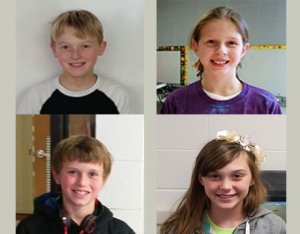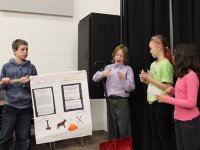PBL Pilot: Student Work Showcase
Fifth grade teachers share how students in their PBL pilot program raised funds for microloans, created websites for a nature preserve, and developed business plans.
Editor's Note: Matt Weyers and co-author Jen Dole, teachers at Byron Middle School in Byron, Minnesota, present the fourth installment in a year-long series documenting their experience of launching a PBL pilot program.
Throughout this year, the question has come up a few times about whether or not some of the projects that we have developed may be too challenging for our students. We believe differently. We feel that students deserve to do real work for real people, and that the work they do can provide positive impact well outside our little corner of the world. As their teachers, we couldn't be prouder of our students' cognitive and social growth. They have taken measurable steps beyond the stratospheric (or so we thought) goals we set for them. However, this month's post is not meant to focus on us as professionals -- it's about our students and their ability to continually amaze. Please take a moment to view short descriptions of our projects below, as well as links to examples of student work.
The Kiva Project
Kiva is an online organization that specializes in providing microloans in increments of $25.00 to applicants in Third World countries. Our Kiva Project, which we completed in the middle of October, was designed to raise our students' global awareness with a project that integrated social studies, math, and language arts. The ultimate goal of the project -- centered around the driving question, "How might we donate our money so it has the most impact?" -- was to hold a community fundraiser night in which all funds raised would be lent through Kiva by the students themselves.
To prepare for the fundraiser night, students were asked to create a unique written work about a country found on Kiva.org. The paper needed to include:
- Does the repayment term fall within the confines of the school year?
- Does the loan help one person or many?
The students were then asked to create a presentation with visuals for use at the fundraiser night, which we held in a "science fair" format. In addition, students contacted area businesses asking for items that could be used in a silent auction. We raised a total of $1400. Among other donations, our students singlehandedly purchased a fishing boat for a gentleman in the Philippines! Below are some student work samples:

Cascade Meadow
Cascade Meadow Wetlands & Environmental Nature Center is a small nature preserve located in the heart of Rochester, Minnesota. This past summer, we contacted the resident naturalist at Cascade Meadow and asked if he would be interested in partnering on a project. After a short discussion, we determined our fifth graders would bolster the amount of accessible digital information for Cascade Meadow visitors by creating specific organism-based websites that would be permanently placed around the preserve for viewing via QR Code. The question we posed to the students was: "How do we help make it easier for the public to learn more about an organism that they encounter at Cascade Meadow Wetlands?" Students created websites on a wide variety of organisms, including red-tailed hawks, great blue herons, chipmunks, eastern cottontail rabbits, and garter snakes.
As an example of what our students accomplished, here's a link to Trent's Cascade Meadow website.
Shark Tank: Entrepreneurship
The genesis of our entrepreneurship project was twofold:
- We feel that people in the 21st century workforce need the ability to create their own jobs if one is not available that meets their needs.
- We ran out of money to take field trips.
In response to these ideas, groups of students were asked to develop a business plan that was designed to answer the question: "Which business model will help us reach our target funds?" We were able to incorporate social studies, math, and language arts standards by focusing on the "4 Ps" of marketing:
- Product
- Price
- Promotion
- Place.
In addition, this allowed us to study the motivations behind historical and contemporary examples of entrepreneurship, and in turn put those concepts into practice.
Student groups were asked to present their proposed plans to a group of high school economics students in a "Shark Tank" format (like the TV show). The high school students used a rubric that we created to narrow down the proposed plans to the four they found most viable. The top four were sent to a group of area business professionals who will select the plan that we will strive to implement. At the time of this writing, the top four plans are still under final review. Monies raised through the selected plan will be placed into the "fifth grade activity" fund and appropriated by the students as they desire.
Please take a moment to enjoy the link to Sally's business plan and pictures from Shark Tank: Byron Public Schools.
We'd like to conclude this episode of our adventures in piloting a PBL program with a few words from our featured students explaining how their year is going:
